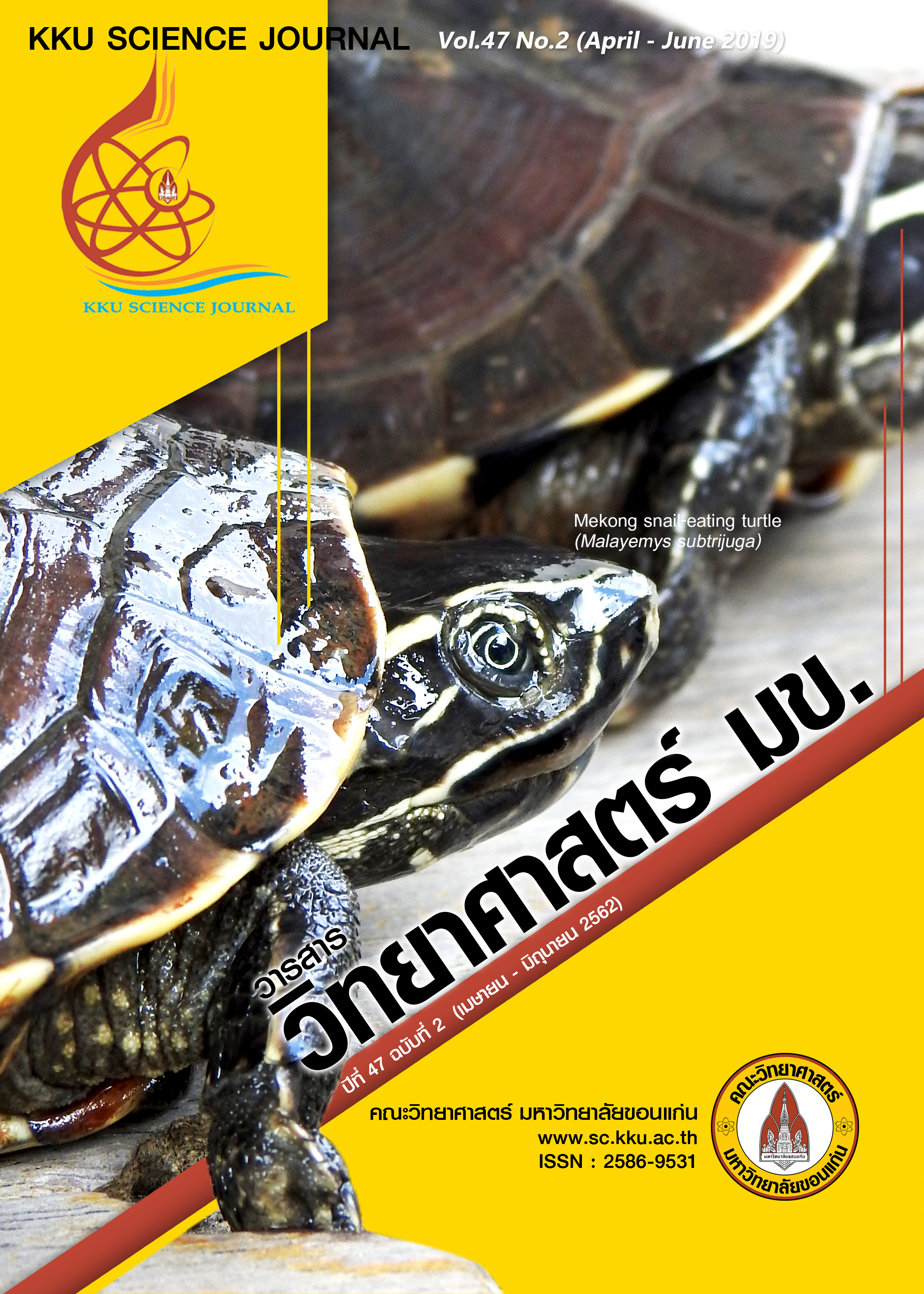Physico-chemical Property and Biological Activity of Dimethyl Glyoxime Metal Nanoparticles level.
Main Article Content
Abstract
The objectives of this research study were to synthesize nanoparticles by using chemical processes with mild condition and to study physico-chemical properties and biological activities in terms of antioxidant properties and antibacterial activities that cause disease in humans. It was found that nanoparticles could be synthesized by using warm solvent as copper (C1), iron (C2), and nickel (C3) nanoparticles with high percent yield 78.82, 81.11, and 55.01% respectively. The result of the study derived from Scanning Electron Microscopes (SEM) showed that copper nanoparticles are in round shape while iron and nickel nanoparticles are in needle shape/monoclinic shape with regular dispersion. Regarding antioxidant properties of the nanoparticles after employing free radical scavenging DPPH technique, it was found that copper nanoparticles possessed the highest efficiency, followed by iron and nickel nanoparticles respectively. Regarding antioxidant properties of the nanoparticles after employing free radical scavenging FRAP technique, it was found that the best reduced substance changing from Fe3+ to Fe2+ was Dimethylglyoxime /ligand (DMG/L1); and copper possessed the lowest antioxidant properties. In terms of antibacterial activities that cause disease in humans, it was found that the C1 and C2 nanoparticles possessed the highest antibacterial efficiency against all of the four bacteria: B. cereus, Staphylococcus aureus, Salmonella, and E. coli with mean values of clear zone between 25-30 mm. Therefore, the present research study has contributed in establishing copper, iron, and nickel nanoparticles with DMG reducing ligand obviously warrant further investigations for establishing their therapeutic utilities
Article Details

This work is licensed under a Creative Commons Attribution-NonCommercial-NoDerivatives 4.0 International License.


